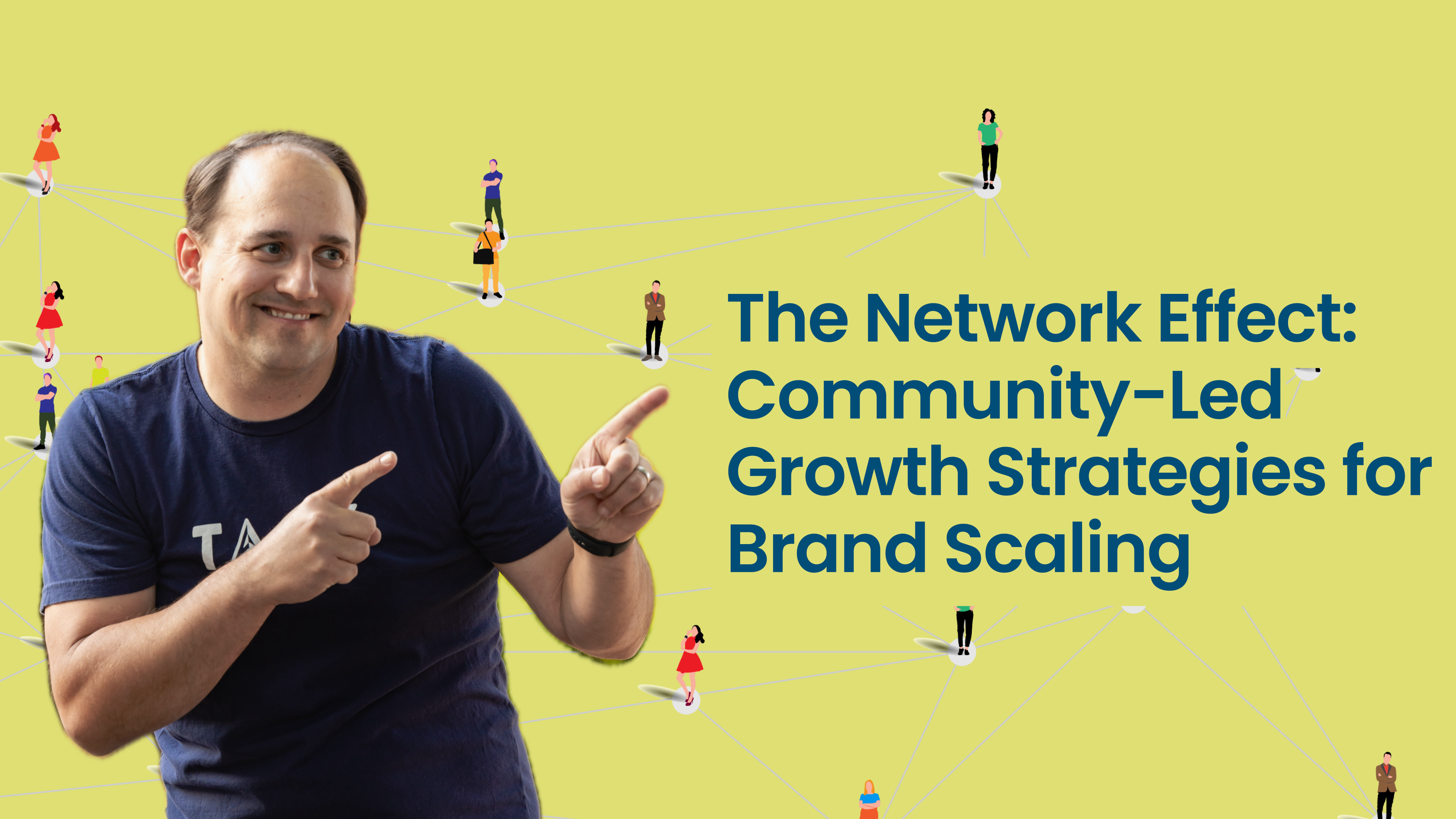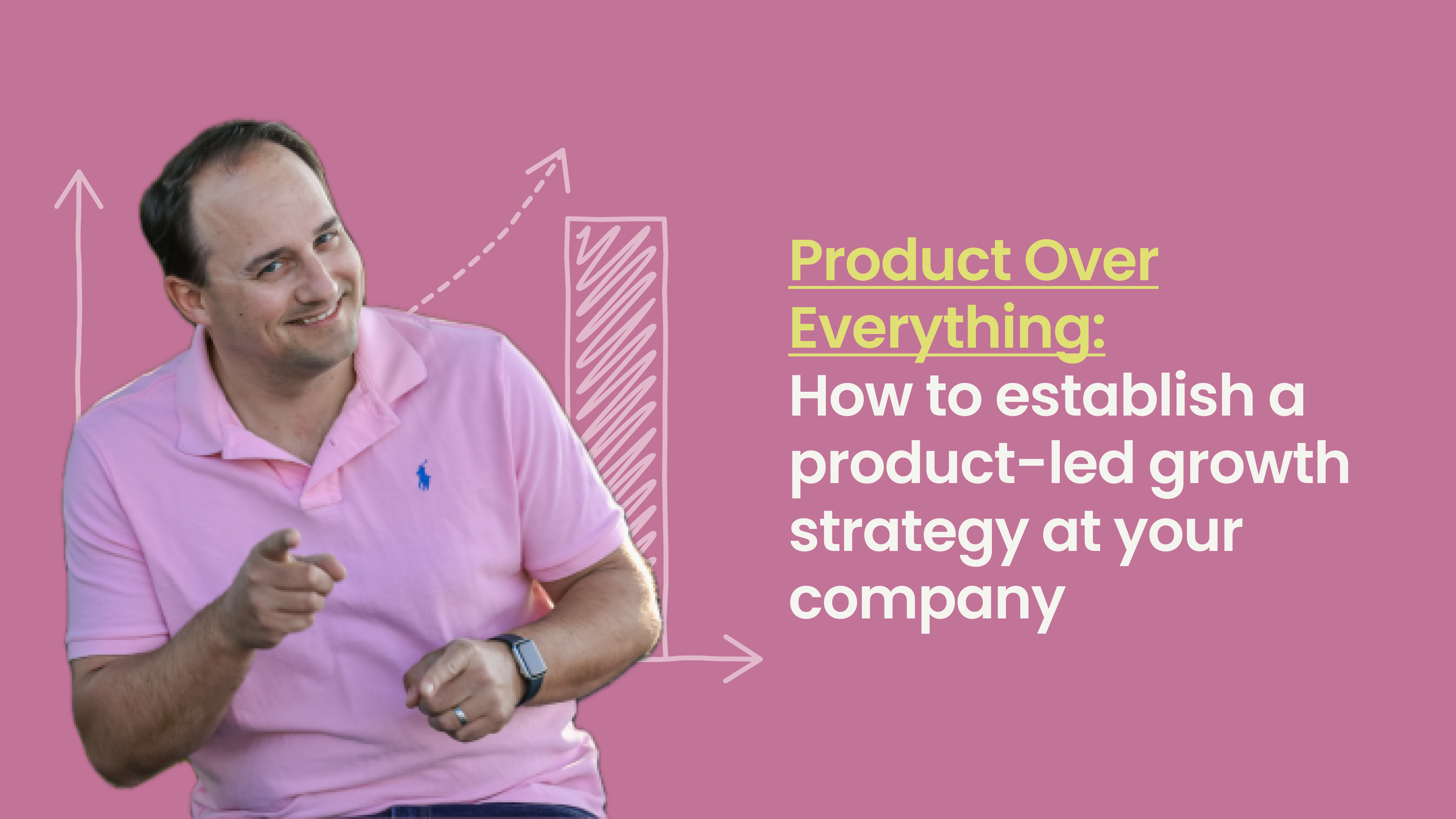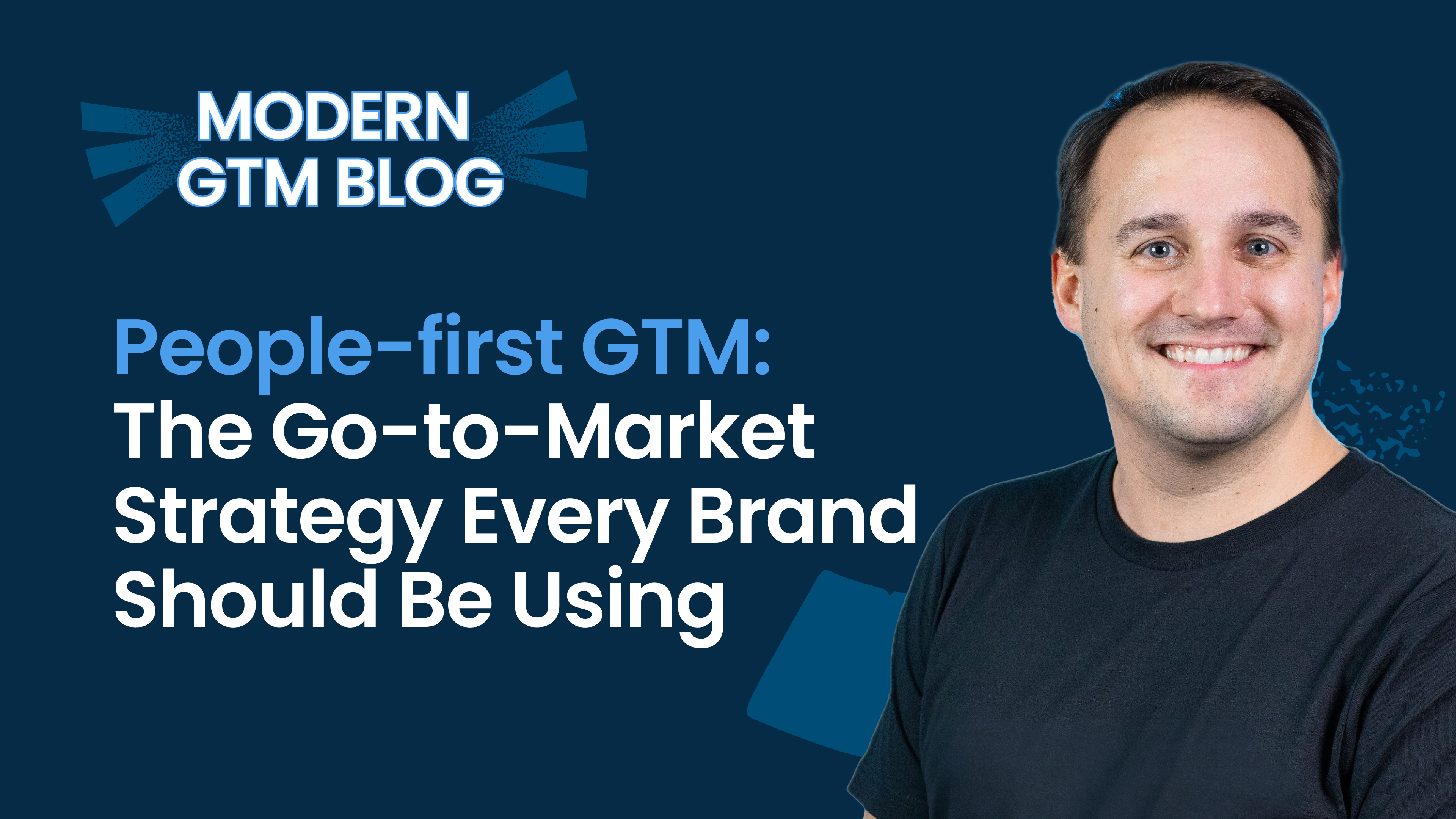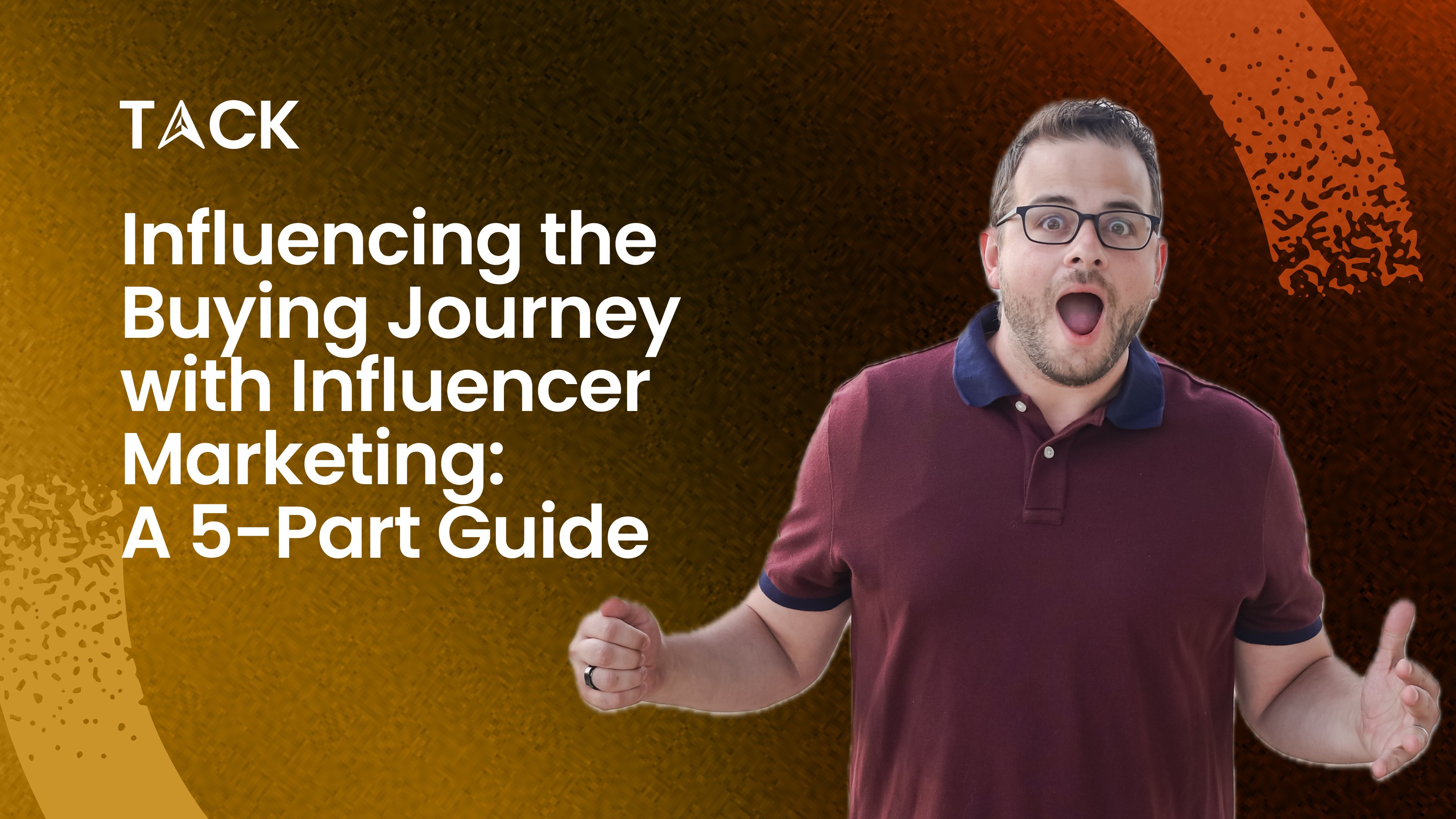The Network Effect: Community-Led Growth Strategies for Brand Scaling
The time for talking at your prospects and customers through your marketing efforts is over (if it ever even had a time). Now is the time for more authentic, community-driven strategies which we’ll refer to here as community-led growth.
In short, it’s a powerful strategy for connecting with your audience naturally, through shared interests to drive brand awareness, engagement, and sustainable revenue growth.
The driving force behind community-led growth is what’s called the network effect – a phenomenon where the value of a product or service increases exponentially as more people use it.
In this article, we'll explore how B2B marketers can harness the network effect through community-led growth to effectively scale their brands and create lasting impact.
Understanding Community-Led Growth
At its core, community-led growth focuses on building and nurturing a community of customers, prospects, and advocates around your brand or product. Unlike traditional marketing approaches that rely heavily on one-way communication, community-led growth emphasizes two-way interactions, peer-to-peer connections, and user-generated content.
Why the shift?
There’s been a measurable, seismic shift in the dynamics of consumer trust and the rise of social media. According to the 2024 Edelman Trust Barometer, people trust information from their peers on par with how much they trust actual scientists—and that far outpaces trust in branded content or advertisements.
This trend has led many brands to rethink their marketing strategies and focus on building authentic relationships with their audience.
Rented community vs owned community
When discussing communities in the context of Community-Led Growth, it's essential to distinguish between "rented" and "owned" communities.
Rented communities exist on third-party platforms like LinkedIn, Twitter, or Facebook, where brands have limited control over the platform's rules and algorithms.
Owned communities, on the other hand, are spaces created and managed by the brand itself, such as private forums, Slack channels, or custom-built community platforms.
The Power of the Network Effect in Community Building
The network effect is a powerful force in community building. As more people join a community, its value increases exponentially.
This creates a flywheel effect:
-
More members lead to more diverse perspectives and expertise
-
Increased diversity results in richer interactions and knowledge sharing
-
Enhanced value attracts even more members, further expanding the network
Several B2B brands have successfully leveraged the network effect through Community-Led Growth.
Salesforce's Trailblazer Community
For years, the Trailblazer Community has been a cornerstone of Salesforce's marketing strategy. Their platform for users to share knowledge, solve problems, and advance their careers within the Salesforce environment.
By facilitating peer-to-peer learning and offering certification paths, the community enhances product adoption and user expertise. This approach not only reduces the burden on Salesforce's support team but also fosters a strong sense of belonging among users.
The community's success has significantly contributed to Salesforce's high customer retention rates and increased product adoption, demonstrating the power of community-led growth in building lasting customer relationships and driving business success.
HubSpot's User Groups
HubSpot's User Groups represent a hybrid model of community-led growth, blending elements of owned and rented communities.
By cultivating an extensive network of local user groups, HubSpot taps into the power of in-person connections and localized networking. These groups facilitate peer-to-peer learning, allowing users to share experiences and best practices specific to their geographic areas or industries.
Likewise, users can self-select to become group leaders which fosters a sense of ownership and deeper engagement with Hubspot. The brand’s rapid growth and strong customer loyalty are thanks in part to this community approach which is both a valuable source of product feedback and continually building brand advocates.
Strategies for Implementing Community-Led Growth
Let’s take a look at the practical aspects of establishing community-led growth. We’ll explore a few tactics and strategies that can help you get started.
Start with Rented Communities
In business and life, communities are built on the back of hard work. Don’t just build a community for the sake of building one. Before investing in building your own community platform, it's often wise to start by engaging in existing conversations on rented platforms.
This might mean building an audience on social platforms such as LinkedIn, Twitter, or other industry-specific forums.
After all, your target audience is already congregating there. You simply have to join in the discussion. At the start your focus should be on providing helpful information, insights, and resources. Not immediately pushing for sales or pulling people toward your product or service which brings us to our next point
Create Valuable Content
By starting with rented communities, you can get started testing ideas right away. Consider these tactics to create valuable, relevant content for your audience:
-
Comment, engage, and comment again: By conversing in a meaningful way with your audience's posts and comments, you can begin to build both relationships and visibility.
-
Create fresh, interesting, and relevant assets: Develop content that resonates with your community's interests and pain points.
-
Convert engagement into leads: Use strategic calls-to-action and lead magnets to guide engaged community members further into your funnel.
Foster Engagement and Interaction
Once you have an audience and valuable content, focus on encouraging active participation and starting to set your community apart from rented space. This could involve facilitating discussions, hosting Q&A sessions, or creating interactive content that prompts community members to share their thoughts and experiences.
One effective strategy is to host roundtable discussions or executive roundtables. These events can be focused on specific topics that are relevant to your audience, such as "how to maximize revenues and drive growth on a limited budget" for experienced CEOs. These roundtables should be designed as safe spaces where participants feel comfortable sharing openly, without the pressure of being sold to.
You can also leverage social media platforms themselves to create engagement opportunities. LinkedIn Live or similar platform-specific features make it easy to host events or Q&A sessions using your rented space. These can be tied to product launches, industry trends, or simply be open forums for discussion.
Remember to mix up the format of your content and engagement opportunities. Include audio, video, text, polls, and other interactive elements to avoid your content getting stale. Different people prefer different mediums, so providing a variety of options can help increase participation across your community.
Build an owned community
After successfully engaging with your audience on rented platforms and demonstrating consistent value, it might be time to create your own community space. That might be a membership site, a dedicated forum, or some other form of an exclusive group. Whichever way you decide to go, you’ll have more control over the experience and can deepen relationships with your most engaged followers.
One effective approach is to create a sub-brand for your community, giving it a distinct identity while still maintaining a connection to your main brand.
When designing your owned community, you must incorporate the elements established earlier and continue to provide value to members. This might include access to exclusive content, such as playbooks, studies, and in-depth resources. You could also offer regular events, such as VIP sessions with executives or industry experts, which can be a powerful draw for community members.
It's important to think about the user experience when building your owned community. Likewise, consider how you can make it easy for members to access all the resources and benefits in one place. This might involve creating a centralized hub where members can find everything from blog posts and ebooks to webinars and community forums with a single login.
Measure the Impact of Community-Led Growth
To justify investment in community-led growth and continually refine your approach, it's crucial to track relevant metrics.
Some key indicators to monitor include the following.
Community growth rate
Tracking the rate at which your community grows over time indicates the health and how well you’re attracting new members to your community. Monitor new member sign-ups or follower counts on a weekly or monthly basis.
Engagement levels (comments, shares, reactions)
High engagement levels signify an active and invested community, which can be quantified by tracking the number of comments, shares, and reactions per post or piece of content. Don’t forget to monitor the percentage of members who engage regularly.
User-generated content volume
The amount of content created by members demonstrates their investment in and value derived from your community. Track the number of member-initiated posts, discussions, or contributions over a given period as well as any assets that the community may have created such as videos, graphics, written content, or whatever is appropriate for your community.
Customer acquisition cost (CAC)
Comparing the CAC for leads generated through your community versus other channels helps justify community investments. This can be calculated by dividing the total costs associated with community management by the number of new customers acquired through the community.
Customer lifetime value (CLV)
A higher CLV for community members versus those who aren’t members is what you’re looking for. It validates the community's impact on customer retention and upsells, and can be determined by comparing the average revenue generated by community members over their entire relationship with your company to that of non-community customers.
Net Promoter Score (NPS)
Similar to CLV, a higher NPS among community members indicates their satisfaction and likelihood to recommend your brand, and can be measured through regular surveys asking participants to rate their likelihood of recommending your product or service on a scale of 0-10.
Regularly showcase these metrics to stakeholders to demonstrate the ROI of your community efforts. Use the data you collect to identify trends, optimize your strategies, and allocate resources effectively.
So you’ve built your community. What’s next?
As your community grows and matures, you can leverage it to fuel other growth strategies.
Community as Fuel for Content-Led Growth
Instead of speaking from a soapbox or ivory tower, collaborate with your community members to create valuable and relevant content that resonates with your audience. Be sure to pay close attention to comments and interactions within your community, as these can be goldmines for lead generation.
Identify common questions or pain points expressed in community discussions and create targeted content to address them, demonstrating your expertise and value to potential customers.
Then, to maximize the impact of your content, apply the right offer + right channel formula. Tailor your content to specific segments of your community and distribute them through the most effective channels, ensuring that your message reaches the right audience at the right time.
Transitioning to Member-Led Growth
As your community grows and becomes more established, it might be time to consider transitioning to more of a member-led growth motion.
The major difference between the two is that in member-led growth, the focus is more on empowering individual members (often existing customers) to take active roles in driving growth through their actions, contributions, and influence. Both Hubspot and Salesforce’s communities could be considered member-led growth initiatives that started as a community.
Ultimately, the transition from community-led to member-led growth represents the pinnacle of this growth strategy, where individual members become active drivers of the brand's success.
Conclusion
Building a brand through community is a lot like hosting the best party in town but nobody’s heard of it yet.
At first, you might need to coax people in, offer them appetizers (valuable content), and introduce them to each other. But once the party gets going, it takes on a life of its own. People start mingling, sharing stories, and inviting their friends and the momentum continues to grow from there.
Skeptical? Think about the last time you made a big purchase or tried a new service.
Chances are, you didn't just rely on flashy ads or polished brochures. You probably asked friends for recommendations, read reviews from other users, or sought advice in online forums. That's community in action, influencing decisions and shaping perceptions.
And that’s what we all want: to be part of something exciting, to contribute our unique perspectives, to grow alongside others who share our passions.
Those principles are exactly why we built our community, TACK Insider. See how we’re putting the principles we talked about in this blog into action and join a community of like-minded B2B marketers focused on growth and innovation.






